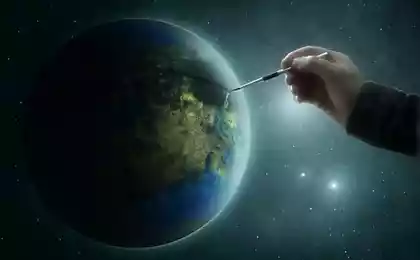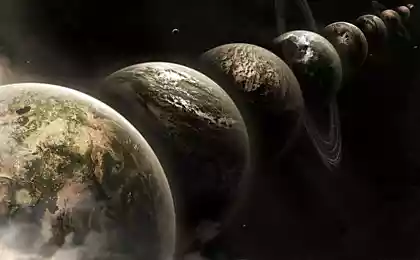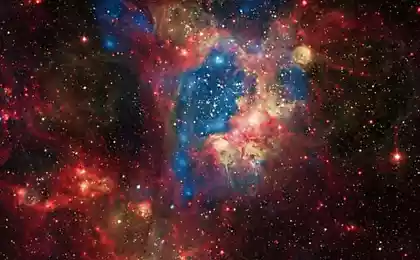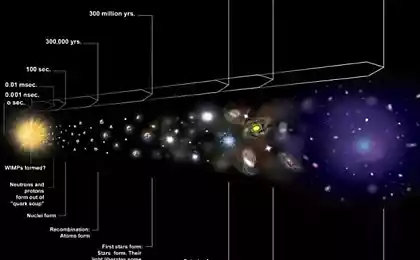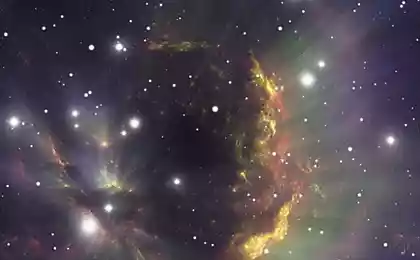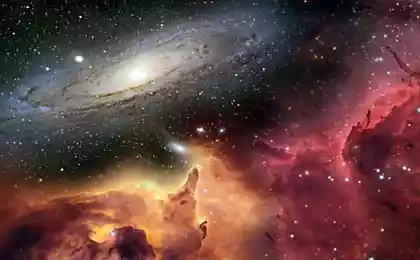963
10 weirdest things in the universe
The more we look at the sun and stars, the more weirdness we observe. Even space itself is puzzling. Recent studies show that the universe extends to 150 billion light-years across, and the age of the cosmos is about 13, 7 billion years. From stars to super-fast nature of things - especially for you we gathered the ten most strange and mysterious objects outside of our little world.
Source: discovery.com
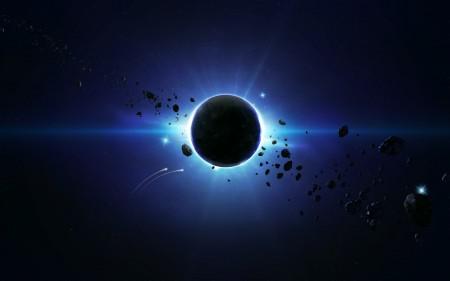
10. Moving Stars
If you ever lay on the southern coast of the Crimea in August or just staring at the night sky, studded with myriads of stars, you've probably seen shooting stars. Although in reality it is the meteors burn up (or does not burn) in the Earth's atmosphere. Tell your child that the stars do not fall - and destroyed his childhood dream. In fact, falling stars exist. One hundred million.
In 2005, astronomers discovered the first "moving star" that was moving through the galaxy at a speed ten times higher than normal - about 900 kilometers per second. We have a suggestion that runs these rare stars in deep space, but there is no certainty. This may be a supernova explosion and the supermassive black hole.
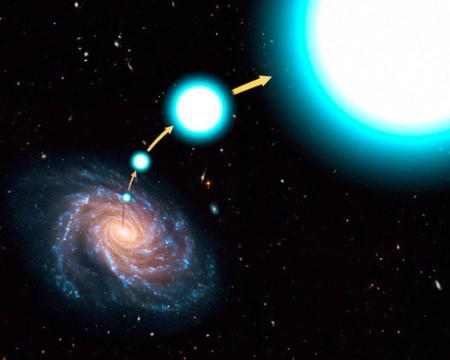
9. Black Holes
"Curiouser and curiouser," - he thought Alice traveling through Wonderland. Astronomers do not know what could be the country of the black hole. This Beauty and the consequences of their encounter with the solar system, we have devoted an entire article.
Nothing can leave the gravitational boundary of the black hole - the so-called event horizon - neither matter nor light. Astrophysicists think that black holes form a dying star with a mass of 3-20 suns. In the centers of galaxies, black holes may exceed the mass of the sun of 10 000 or 18 billion times. And they grow, sucking gas, dust, stars and black holes smaller.
With regard to medium-sized black holes, their existence is, oddly enough, is a big question.
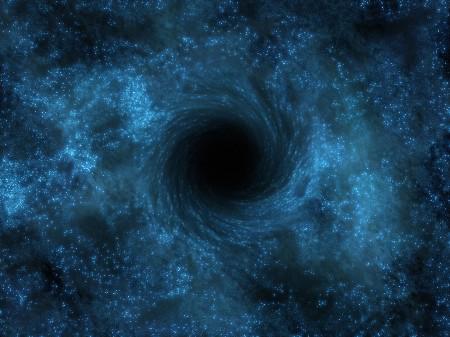
8. Magnetars
Sun revolves around its axis about once every 25 days, gradually distorts the magnetic field. But imagine a dying star is heavier than the sun, which collapses and shrinks into a ball of matter of a few tens of kilometers in diameter. As the whirling dancer spins faster, pressing his hands to himself and had pitched them into the hand gesture spins and a neutron star with its magnetic field.
Calculations show that these objects have a time-varying magnetic field, which is a million billion times stronger than Earth's. This is enough to ruin your credit card at a distance of hundreds of thousands of kilometers and turn atoms into ultra-thin cylinders.
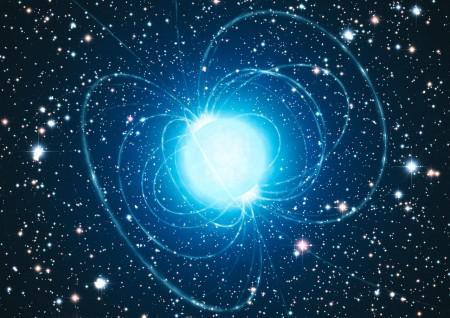
7. Neutrino
Take a coin out of his pocket and hold it in front of a second. And you know what? Nearly 150 billions of tiny and almost weightless particles called neutrinos by just flew through it as if it had not existed.
Scientists have discovered that they are born in the stars (live or exploding), nuclear materials and during the Big Bang. Elementary particles have three "flavors" and what is most interesting, disappear when they want.
Since neutrinos are sometimes interact with "normal" matter such as water and mineral oil, the scientists hope to be able to use them as a kind of revolutionary telescope to peer into the most distant corners of the universe, hidden by dust and gas.
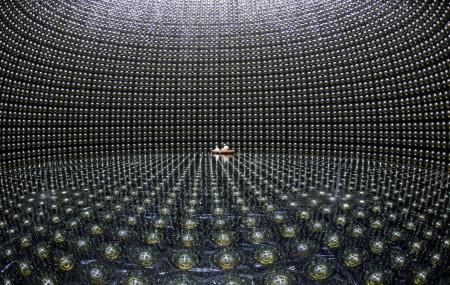
6. Dark matter
If you take all the energy and matter in the cosmos, in zapechete pie and divide it, the result will surprise you.
All galaxies, stars, planets, comets, asteroids, dust, gas and particles account for only 4 percent of the known universe. Most of what we call "matter" - about 23 percent of the universe - is invisible to the human eye and instruments.
So far.
Scientists can see the gravitational influence of the dark matter in the stars and galaxies, but looking desperately for a way to detect it directly to their instruments. They believe that, along with neutrinos may be massive and more elusive particles.
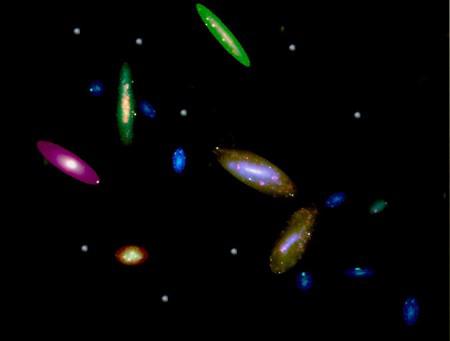
5. Dark energy
That's what really surprise anyone in the world - and especially the scientists - dark energy. Continuing the analogy of a cake, dark energy has been 73 per cent of the known universe. It seems that it pervades the entire cosmos and galaxies disperse farther and farther from each other at tremendous speeds.
Some cosmologists believe that an extension of a few trillion years from the Milky Way will make some "island universe" from which other galaxies are not visible.
Others believe that the growth rate is so high that it would lead to "big rip." In this case, the strength of dark energy will overcome gravity and disconnect the stars and planets, the forces that hold the particles together, the molecules of these particles, and finally atoms and subatomic particles. Fortunately, humanity seems to not see this cataclysm.
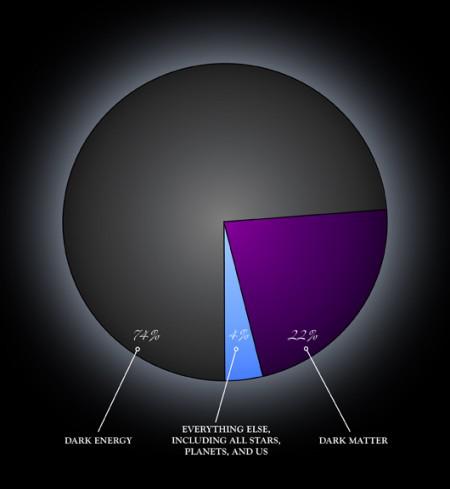
4. Planet
Despite the fact that we live on the planet, and the like, it remains one of the most important mysteries of the universe. For example, there is no theory that would explain fully how of gas and dust around stars have formed a planet - especially rocky. Do not be explained by the fact that a large part of the planet is hidden under the surface. Powerful tools could shed light on the latter, but we can barely even explore the planet of our solar system.
The first planet outside our solar system has been discovered only in 1999 and only in 2008 we got the first decent shot of exoplanets. Recently, scientists have discovered, and the smallest exoplanet so far.
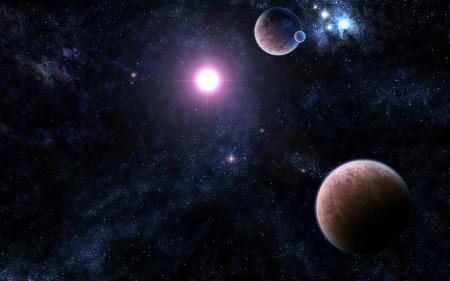
3. Gravity
The force that causes the stars to burn the world - remain together and form the orbit, with all this remains one of the most common and weak in space.
Scientists have calculated almost all equations and models describing and predicting gravity, but it is the source of matter is an absolute mystery.
Some believe that the gravity of the meet are incredibly small particles called gravitons under, but they can be detected in principle - a big question.
However, it is actively hunt for large perturbations in the universe, called gravitational waves. If they are found (presumably from the merger of black holes), the concept of Albert Einstein that the universe has a fabric of space-time, will find solid ground.

2. Life
Matter and energy abound in the universe, but only in some places of space diversity, there are enough favorable conditions for the emergence of life.
And thanks to the constant access to life here on Earth, we understand what elements and conditions necessary for the emergence of this strange phenomenon. But the exact recipe of carbon, hydrogen, nitrogen, oxygen, phosphorus and sulfur are converted in the body is unknown.
Scientists are looking for new locations in the solar system where life might thrive (or even could, for instance, under the surface of watery moons), hoping to develop a convincing theory of the origin of life.

1. Universe
Poincaré dodecahedral space. Supposed universe.
The source of energy, matter, and the universe itself is the greatest mystery - the universe itself.
Based on the widely spreading waves of cosmic radiation and other evidence, scientists believe that the universe was formed after the Big Bang - inexplicable expansion of energy from superdense and superhot source.
But the description of time before this event may not be possible, because the time and did not exist before the Big Bang. Particle accelerators, colliding atoms, trying to shed light on the formation of the universe. And to make it a little less strange than it is today.
Source: discovery.com

Source:
Source: discovery.com

10. Moving Stars
If you ever lay on the southern coast of the Crimea in August or just staring at the night sky, studded with myriads of stars, you've probably seen shooting stars. Although in reality it is the meteors burn up (or does not burn) in the Earth's atmosphere. Tell your child that the stars do not fall - and destroyed his childhood dream. In fact, falling stars exist. One hundred million.
In 2005, astronomers discovered the first "moving star" that was moving through the galaxy at a speed ten times higher than normal - about 900 kilometers per second. We have a suggestion that runs these rare stars in deep space, but there is no certainty. This may be a supernova explosion and the supermassive black hole.

9. Black Holes
"Curiouser and curiouser," - he thought Alice traveling through Wonderland. Astronomers do not know what could be the country of the black hole. This Beauty and the consequences of their encounter with the solar system, we have devoted an entire article.
Nothing can leave the gravitational boundary of the black hole - the so-called event horizon - neither matter nor light. Astrophysicists think that black holes form a dying star with a mass of 3-20 suns. In the centers of galaxies, black holes may exceed the mass of the sun of 10 000 or 18 billion times. And they grow, sucking gas, dust, stars and black holes smaller.
With regard to medium-sized black holes, their existence is, oddly enough, is a big question.

8. Magnetars
Sun revolves around its axis about once every 25 days, gradually distorts the magnetic field. But imagine a dying star is heavier than the sun, which collapses and shrinks into a ball of matter of a few tens of kilometers in diameter. As the whirling dancer spins faster, pressing his hands to himself and had pitched them into the hand gesture spins and a neutron star with its magnetic field.
Calculations show that these objects have a time-varying magnetic field, which is a million billion times stronger than Earth's. This is enough to ruin your credit card at a distance of hundreds of thousands of kilometers and turn atoms into ultra-thin cylinders.

7. Neutrino
Take a coin out of his pocket and hold it in front of a second. And you know what? Nearly 150 billions of tiny and almost weightless particles called neutrinos by just flew through it as if it had not existed.
Scientists have discovered that they are born in the stars (live or exploding), nuclear materials and during the Big Bang. Elementary particles have three "flavors" and what is most interesting, disappear when they want.
Since neutrinos are sometimes interact with "normal" matter such as water and mineral oil, the scientists hope to be able to use them as a kind of revolutionary telescope to peer into the most distant corners of the universe, hidden by dust and gas.

6. Dark matter
If you take all the energy and matter in the cosmos, in zapechete pie and divide it, the result will surprise you.
All galaxies, stars, planets, comets, asteroids, dust, gas and particles account for only 4 percent of the known universe. Most of what we call "matter" - about 23 percent of the universe - is invisible to the human eye and instruments.
So far.
Scientists can see the gravitational influence of the dark matter in the stars and galaxies, but looking desperately for a way to detect it directly to their instruments. They believe that, along with neutrinos may be massive and more elusive particles.

5. Dark energy
That's what really surprise anyone in the world - and especially the scientists - dark energy. Continuing the analogy of a cake, dark energy has been 73 per cent of the known universe. It seems that it pervades the entire cosmos and galaxies disperse farther and farther from each other at tremendous speeds.
Some cosmologists believe that an extension of a few trillion years from the Milky Way will make some "island universe" from which other galaxies are not visible.
Others believe that the growth rate is so high that it would lead to "big rip." In this case, the strength of dark energy will overcome gravity and disconnect the stars and planets, the forces that hold the particles together, the molecules of these particles, and finally atoms and subatomic particles. Fortunately, humanity seems to not see this cataclysm.

4. Planet
Despite the fact that we live on the planet, and the like, it remains one of the most important mysteries of the universe. For example, there is no theory that would explain fully how of gas and dust around stars have formed a planet - especially rocky. Do not be explained by the fact that a large part of the planet is hidden under the surface. Powerful tools could shed light on the latter, but we can barely even explore the planet of our solar system.
The first planet outside our solar system has been discovered only in 1999 and only in 2008 we got the first decent shot of exoplanets. Recently, scientists have discovered, and the smallest exoplanet so far.

3. Gravity
The force that causes the stars to burn the world - remain together and form the orbit, with all this remains one of the most common and weak in space.
Scientists have calculated almost all equations and models describing and predicting gravity, but it is the source of matter is an absolute mystery.
Some believe that the gravity of the meet are incredibly small particles called gravitons under, but they can be detected in principle - a big question.
However, it is actively hunt for large perturbations in the universe, called gravitational waves. If they are found (presumably from the merger of black holes), the concept of Albert Einstein that the universe has a fabric of space-time, will find solid ground.

2. Life
Matter and energy abound in the universe, but only in some places of space diversity, there are enough favorable conditions for the emergence of life.
And thanks to the constant access to life here on Earth, we understand what elements and conditions necessary for the emergence of this strange phenomenon. But the exact recipe of carbon, hydrogen, nitrogen, oxygen, phosphorus and sulfur are converted in the body is unknown.
Scientists are looking for new locations in the solar system where life might thrive (or even could, for instance, under the surface of watery moons), hoping to develop a convincing theory of the origin of life.

1. Universe
Poincaré dodecahedral space. Supposed universe.
The source of energy, matter, and the universe itself is the greatest mystery - the universe itself.
Based on the widely spreading waves of cosmic radiation and other evidence, scientists believe that the universe was formed after the Big Bang - inexplicable expansion of energy from superdense and superhot source.
But the description of time before this event may not be possible, because the time and did not exist before the Big Bang. Particle accelerators, colliding atoms, trying to shed light on the formation of the universe. And to make it a little less strange than it is today.
Source: discovery.com

Source:

